#hypercard adventures
Explore tagged Tumblr posts
Note
I saw your ask to austistic-af about old computers.
Before we had a Windows PC (aka a PC), we had a Macintosh. (Some kind of Macintosh Classic I think). I used to play HyperCard games - such as this, Inigo Gets Out. https://archive.org/details/hypercard_inigo_gets_out.
We then had a Power Macintosh, and eventually an early iMac. For those we had a box set of floppy discs (3 and a half inch floppies) from Infocom of text based adventures. Then we got Myst on CD - that was the height of technology, with FMV!
I got a PC with Windows 3.1 on which was my earliest Windows; used it to learn VisualBasic and of course to play Minesweeper!
And yes. Windows Vista did suck.
WOW THATS SO COOL!!!!!!!!!
You learned Visual Basic? That’s amazing! I’ve tried to learn it by myself; unfortunately, it doesn’t rly stick 😅. Which is a shame, because if I could write lil macros for myself and automate some of my capstone work or w/e, I would be so powerful. Oh well.
:O you had a Power Macintosh and an iMac! That’s so cool! Thanks for sending the info link about that game; I’ll have to check it out 👀
You used 3.1? THATS SO INTERESTING. How did it measure up to your previous iMac? Did the OS feel more or less intuitive to use, and how were its available features?
Why did Vista suck, out of curiosity? Wikipedia only tells me so much…
2 notes
·
View notes
Text
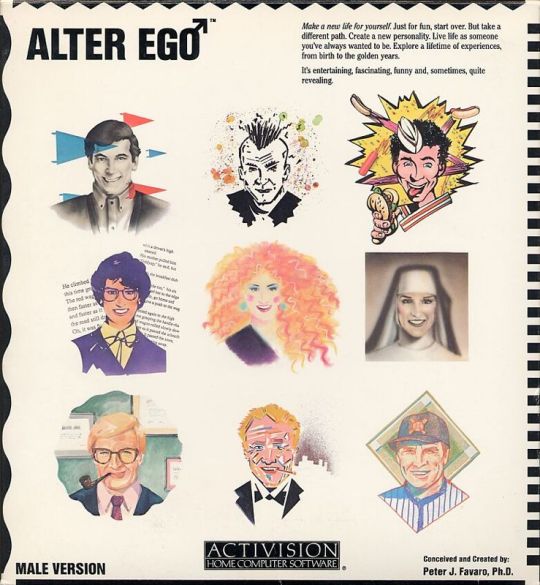
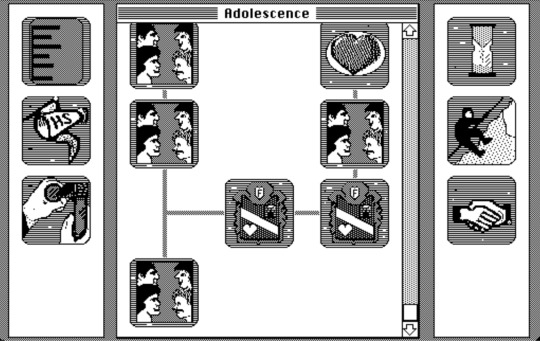
Alter Ego (Apple Macintosh)
Developed/Published by: Peter J. Favaro / Activision Released: 27/04/1986 Completed: 21/11/2023 Completion: Died of old age in my bed, single, but a millionaire. Little Richard’s “Thinkin’ About My Mother” was playing on the radio as I played. “I swear I'm gonna love her… Yes, until the day I die.”
Alter Ego is a dated, sexist mess that basically doesn’t work at all.
I am so fond of it.
One of those games I found in my earliest forays on the internet, digging around for “abandonware” Alter Ego was immediately interesting to my teenage self–a game that let you live an entire life! Sure, it did it in a text-only, choose-your-own-adventure style, but I was already fiddling around with Infocom games and it wasn’t that many years out from owning an Amstrad CPC; the limitations had no effect upon the promise I imagined.
The interesting thing about when I played it then is that I remember playing it into Young Adulthood and never further. Until now I couldn’t remember why. Did I get bored? Was I overwhelmed with options?
Well, here’s a hint. Alter Ego was designed in 1986 by Peter J. Favaro, a psychologist who at the time was just 28 years old (which I am forced to admit is younger than I am now.) It becomes very quickly clear that past a certain point he doesn’t know what the fuck he’s talking about.
But let’s take a step back here and discuss how Alter Ego actually works. Really it’s one of the earliest examples of a hypertext game (it actually predates Hypercard, if you can believe it.) You progress through seven stages of life from infancy to old age, and in each, you progress through a kind of… card map? choosing cards which each contain a vignette where you have to make a few decisions–if you’re a toddler, do you share your toys? If you’re a teenager, do you act sulky to your parents when they won’t let you do what you want? And then have that effect your stats and have time pass as a result.
As the game progresses, it adds several cards that you can flip over whenever you feel like it. A card that lets you try and meet people, or have experiences with your current partner, for example. A card that lets you make big purchases that you might have to pay off with a loan.
The goal in Alter Ego is, simply, to… see what happens, and it’s here that the game’s highest pleasures and greatest mistakes are found. I decided to play this via a classic Mac emulator (as I believe that Favaro created this on a Mac) and although I originally played this on PC, the convergence of playing this via a system that I haven’t touched since I was at high school made the early sequences of this game a brush with nostalgia I haven’t felt before. The game is at its highest when you get to in some ways relive, but not quite, the past.
Like most people who play this (at least the first time) I chose to play it making the kind of decision I would make, as best I could, at the time I’d make them, and each experience was a moment of–oh, remember when something like this happened?
It’s not perfect. Designed in 1986 by a young, white American, there’s this strange sense of re-living your life by way of “Leave It To Beaver” even if, like me, you only know the reference second or third hand. Personally I looked at it as asking: what if I’d gone to an American high school and lived my John Hughes dreams? The game was developed in the same era, I watched The Breakfast Club as a teenager around the same time I was messing around with abandonware and using classic Macs at school... it all intertwines.
And really, if the game had stayed there, I think it could have worked. A kind of… growing up simulator. Add lots of different vignettes, not all which play every time, and then the player plays until they leave college and the game goes “congratulations! You became a CORN FARMER. You married ONE wife and had SIX children. Your dog is called JEFF.”
Sadly, it does not do that, and it becomes pretty clear that Favaro didn’t really have a clear plan or concept for how adulthood was going to work. Childhood and Adolescence, after all, are fairly clear cut. You have to go to school, your parents take care of most other responsibilities. From a western, middle-class perspective, you’ll mostly have the same kind of experiences. As an adult however, all kinds of things can happen at all stages of life.
It goes wrong immediately. You can go to college, but there’s no clear pay-off, you never seem to graduate! Jobs are just… something you have. Purchases and money quickly turn out to be totally meaningless (there may be a fail-state if you run out of money with huge debts, but I didn’t see it.)
The problem is that Favaro is forced to flatten everything into the most generic experiences once he reaches adulthood as the biggest decisions we make in our lives–who to partner with, our careers–cannot really interact with the canned vignettes of the main path. The box art is like “become a baseball player or a nun!” but even if you could the actual experience is “what if you were a white collar worker in the 1980s” as your nun deals with getting chewed out by their boss and refused a promotion or whatever.
In many ways it’s simply a fault of coming so early. A modern game in even just Twine can far more easily modify its text based on the information you’ve given it, and more easily offer events that either relate to your stats and relationships. In many other ways, it’s the fault of the culture that Favaro lived in and which, sadly, he could not see beyond. I played the “Male” version, and attitudes to women are beyond poor; many later vignettes are basically Penthouse letters (actually, another American reference I only know second hand, I swear) and one vignette featuring your discovery that a friend is gay is… er… not good.
It’s made even weirder by how… judgemental the game’s “narrator” (read: Favaro) is when it comments on your decisions. He definitely has an idea how you should be living your life, and hell mend you for not following it.
All that said, however, there’s still some amusement and possibly revealing moments to be had in the later stages of the game. I for one was surprised by my complete inability to maintain a steady relationship and how borderline panicked I got as I aged about it! It seems like it might be fairly random, which makes how unforgiving it is almost hilarious: I had been living with a woman for years, we’d invested in a company and became millionaires, at least according to one vignette I got on amazing with her son from another marriage… I popped the question and she said no because I was “untrustworthy.” Relationship over.
I probably should have indulged less in those Penthouse letters vignettes… It was… research. For this article. Yeah. Not just because playing this made me feel like a teenager again and the teenager I was would have made all those decisions.
Anyway. As much as Alter Ego doesn’t work, what stands out about it is what stands out about, say, an Infocom game. The text-based nature of it draws you in as deeply as a book, and it simply engages the imagination to make the game something more than it is. I can see Floyd in Planetfall, and I can see my weird picket-fences middle-America alternate life here. For weaving that sort of magic, it does deserve some respect. Just don’t take it too seriously.
Will I ever play it again? As I expressed above, I’ve only ever played the Male version, and the Female version is supposed to have a series of bug-fixes and less instant-death situations, but far, far more sexism. I might take a look at it, but even if I don’t I can imagine noodling on this again, at least as a mirror into memory.
Final Thought: Worth noting that you don’t have to take my word on this game, it can easily be played in-browser, which is probably fine if you don’t have a dense, multi-layered nostalgia attached to it. Support Every Game I’ve Finished on ko-fi! You can pick up a digital copy of exp. 2600, a zine featuring all-exclusive writing at my shop, or join as a supporter at just $1 a month and get articles like this a week early.
#gaming#video games#games#txt#text#review#apple macintosh#mac#apple mac#alter ego#peter j favaro#activision#1986
5 notes
·
View notes
Text
the thing about myst is that there was less than 3 months between its first commercial release (Mac only) and doom shareware dropping (DOS only)
and it didn't even leave the Mac platform until the full version of Doom was for sale, and that first non-Mac version, for Windows, came out March 1994.
in a lot of ways its more of a last relic of the period of fairly static Mac multimedia CD rom titles than it was at all a real inspiration for ongoing adventure titles. Shit was made in Hypercard, it moved glacially cuz the graphics were the entire theoretical wow factor.
in comparison Doom was straight up ongoing inspiration for other FPS titles for ages, particularly in speed, and with only minor sacrifices in resolution to achieve that - a style of gaming that even adventure games would quickly adopt because it's more engaging, frankly.
3 notes
·
View notes
Text
The things I learned in the relationships I've had that fell apart were good things to learn, and they have served me and the people who interact with me well.
The stories I wrote that never even made it into proper document form (let alone print) were still practice at writing, and in one case were the foundation of a decades-long friendship.
The foundations of logic I learned in Hypercard when I was trying to develop my own choose-your-own-adventure games on our first home computer when I was 5 continue to help me with my Java homework 35 years later.
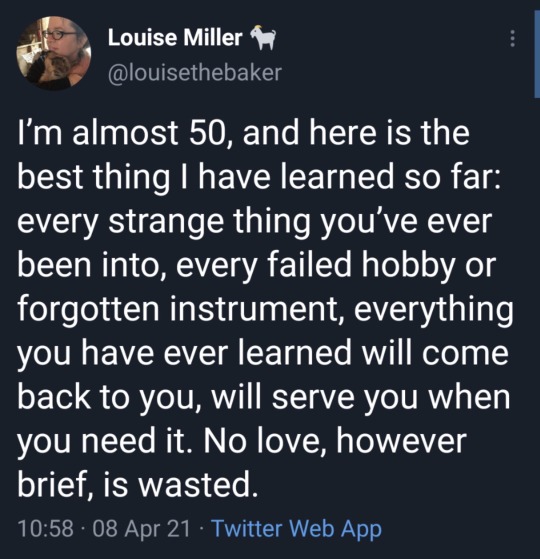
“I’m almost 50, and here is the best thing I have learned so far: every strange thing you’ve ever been into, every failed hobby or forgotten instrument, everything you have ever learned will come back to you, will serve you when you need it. No love, however brief, is wasted.” @louisethebaker on Twitter
168K notes
·
View notes
Text
Bill Atkinson, architect of the Mac’s graphical soul, dies at 74
Using HyperCard, Teachers created interactive lessons, artists built multimedia experiences, and businesses developed custom database applications—all without writing traditional code. The hypermedia environment also had a huge impact on gaming: 1993 first-person adventure hit Myst originally used HyperCard as its game engine. An example of graphical dithering, which allows 1-bit color (black…
0 notes
Text
PC Engine - The Manhole
Title: The Manhole / ザ・マンホール
Developer/Publisher: Cyan Worlds / Activision / Sunsoft
Release date: 22 March 1991
Catalogue No.: SSCD0001
Genre: Point & Click Adventure
Format: CD-ROM2


Once Bill Atkinson created Hypercard, just about anyone could make an amusing little program for the Macintosh. Among them all was Manhole, a cute game designed by a pair of brothers, who wanted to make something amusing for their little kids. It became so well-known that even Sunsoft wanted to work with the then-fresh Cyan to port some of Cyan's works to game consoles like the PC Engine CD before their breakout hit, and spiritual successor dubbed MYST.
The premise was that you entered a magic manhole and found a whole new fantasy land to explore. The gameplay was simply point-and-click, and yet just about everything clicked on would result in an amusing sound or animation, cute fun for kids. This CD-only game also included well-chosen classical music clips as well as graphics that were as well done as any classic children's book. Oh, and this being a PC Engine release, a choice of Japanese and English speech samples. By the way, these same game designers were the ones who would go on to make Cosmic Osmo, and later, the infamous MYST! This was one of their best... Well done Sunsoft and Cyan for an excellent educational adventure game.

youtube
0 notes
Text
Tiny Tim's Big Adventure (Classic Mac, Dan Reilly, 1990)
Join the lovable Dickensian lad in an Extremely Normal Experience. Contains smoking and drug use. You can play it in your browser here.
Tip: Click the ? icon on the title screen for vital info - you won't beat the game or discover everything without it.








#internet archive#in-browser#mac#macintosh#classic mac#hypercard#game#games#video game#video games#videogame#videogames#computer game#computer games#obscure game#obscure games#adventure game#adventure games#point and click#weird game#weird games#1990#1990s#1990's#90s#90's#cw drugs#tw drugs#cw smoking#tw smoking
5 notes
·
View notes
Text
Thinking about game engines and design
somewhere i have a few disks with old Hypercard stack games i made once upon a time, the last one i made i had a pretty nice point and click adventure game going and then Myst came out, and i found out they had also used hypercard to build it and just.... stopped making games for a bit. teenage me was both infuriated in that special way only teenagers can be that someone managed to make something that amazing with the same program i was using, and awestruck that there was that kind of potential in it.
I picked up making games of my own again a few years later after i'd gotten the "i'll never be that good" nonsense out of my system and got back to just having fun making things. I poked my way through making my own maps for Doom, designed and built a bunch of little things for fun, got into using RPG Maker and Adventure Game Studio, got mad at Gamemaker a few times and stuck with AGS. I even used Geocities to make point and click adventures and puzzle games back in the day by linking web pages together for areas and events to click through. What brings all this up is I’ve been browsing through info on a couple modern engines, Godot and Unity specifically, to start migrating one of my old games over into a new engine and a new form. Its been a long time since i’ve actively worked on anything, maybe too long i think sometimes as i look at some of the tutorials on things. Part of the reason is someone took a look at the minecraft myst island project and told me off i could have built a game of my own in the time i’d wasted on it, which is kind of true but rude, and is part of why things got slowed down on the update project because it got a little depressing to think about thanks to them, and also every game version update keeps breaking more of the island’s puzzles, so i gave up updating it and it’s now staying version locked in the two 1.12 and 1.13 versions. so, might as well waste time on something else i’ll probably never finish like learning a new game engine because most of the ones i know don’t run on modern computers anymore. yay <_<
3 notes
·
View notes
Text
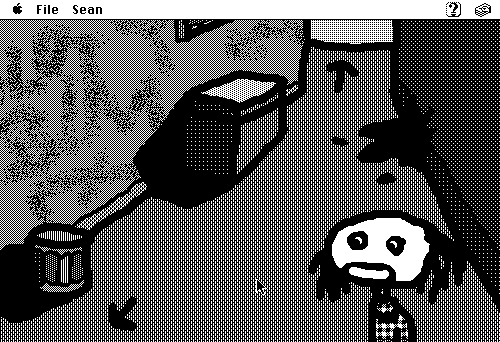
Adventures of Sean 2
169 notes
·
View notes
Text
Apple HyperCard (1987) with Computer Chronicles clip featuring the creator, Bill Atkinson from Apple
Wikipedia -
HyperCard is a software application and development kit for Apple Macintosh and Apple IIGS computers. It is among the first successful hypermedia systems predating the World Wide Web. HyperCard combines a flat-file database with a graphical, flexible, user-modifiable interface.
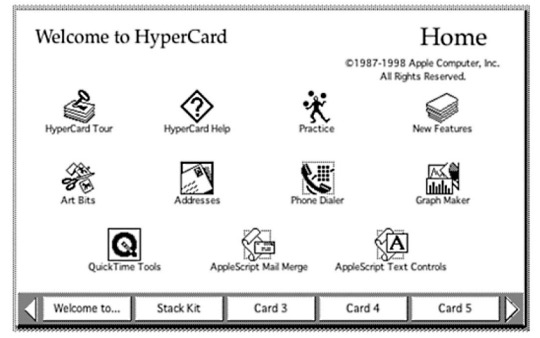

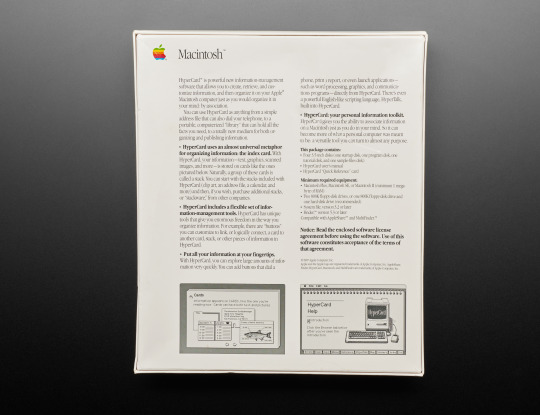
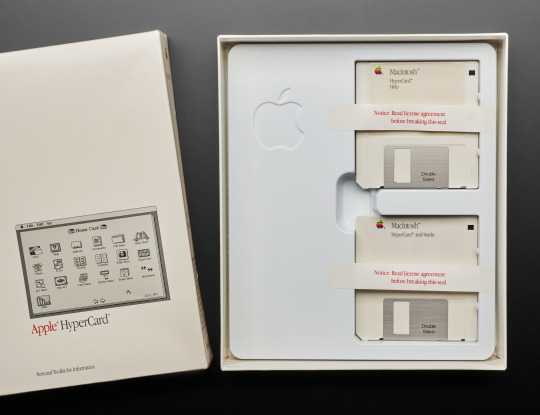
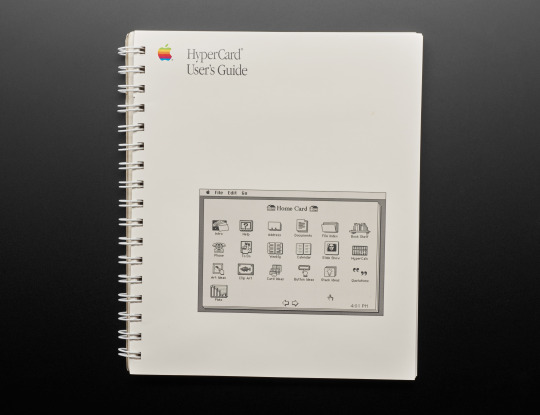

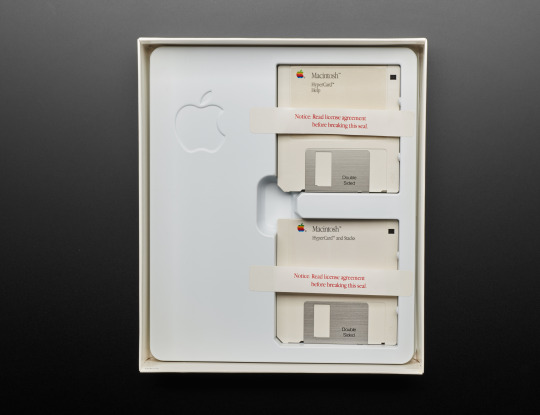




HyperCard combines a flat-file database with a graphical, flexible, user-modifiable interface. HyperCard includes a built-in programming language called HyperTalk for manipulating data and the user interface.
This combination of features – a database with simple form layout, flexible support for graphics, and ease of programming – suits HyperCard for many different projects such as rapid application development of applications and databases, interactive applications with no database requirements, command and control systems, and many examples in the demoscene.
HyperCard was originally released in 1987 for $49.95 and was then included for free with all new Macs sold. It was withdrawn from sale in March 2004, having received its final update in 1998 upon the return of Steve Jobs to Apple. HyperCard runs in the Classic Environment, but was not ported to Mac OS X.
HyperCard influenced the development of the Web in late 1990 through its influence on Robert Cailliau, who assisted in developing Tim Berners-Lee’s first Web browser. Javascript was inspired by HyperTalk.
Video and more An introduction to Apple's Hypercard. Guests include Apple Fellow and Hypercard creator Bill Atkinson. https://www.youtube.com/watch?v=FquNpWdf9vg https://blog.adafruit.com/2014/06/18/hypercard/
Apple Fellow and Hypercard creator Bill Atkinson https://en.wikipedia.org/wiki/Bill_Atkinson https://twitter.com/billatk https://www.youtube.com/@photocardapp
CircuitPython Your Own Adventure https://learn.adafruit.com/circuit-python-your-own-adventure?view=all
Tons of HyperCard on the Adafruit blog! https://blog.adafruit.com/?s=hypercard
HyperCard, the missing link to the Web https://blog.adafruit.com/2021/06/07/34-years-of-hypercard-the-missing-link-to-the-web-hypercard-vintagecomputing-arstechnica/
The Library of Congress and HyperCard https://blog.adafruit.com/2021/12/15/the-library-of-congress-and-hypercard-vintagecomputing-digitalpreservation-librarycongress/
DitherPaint: a 1-bit, browser-based drawing application https://blog.adafruit.com/2021/06/09/ditherpaint-a-1-bit-browser-based-drawing-application/
Proposed Commercials featuring Mac team Members in October 1983, Full Demo Reel https://blog.adafruit.com/2019/11/24/proposed-commercials-featuring-mac-team-members-in-october-1983-full-demo-reel-andyhertzfeld-apple/
Andy Hertzfeld has a YouTube channel https://blog.adafruit.com/2019/07/20/andy-hertzfeld-has-a-youtube-channel-and-its-great-andyhertzfeld-billatk-susankare/
Apple Macintosh - Your Tour of HyperCard (1991) Apple Computer https://www.youtube.com/watch?v=tx_WCIAM4bA
Explore Magic Cap, a smartphone OS from a decade before the iPhone https://learn.adafruit.com/magic-cap-the-smartphone-os-from-the-90s?view=all
22 notes
·
View notes
Text
Episode 169 - What is a Book? (Part 2)
This episode we’re continuing our conversation from last year and talking about What is a Book? We talk about hypertext, instruction manuals, visual novels, campfire stories, and more!
You can download the podcast directly, find it on Libsyn, or get it through Apple Podcasts, Stitcher, Google Podcasts, or your favourite podcast delivery system.
In this episode
Anna Ferri | Meghan Whyte | Matthew Murray | Jam Edwards
Media We Mentioned
DC Pride 2022 #1
Tic Tac Tome: The Autonomous Tic Tac Toe Playing Book by Willy Yonkers
Homestuck (Wikipedia)
Doki Doki Literature Club! (Wikipedia)
Everything Everywhere All at Once (Wikipedia)
Ant-Man and the Wasp: Quantumania (Wikipedia)
Lasers & Feelings
Understanding Comics by Scott McCloud
Links, Articles, and Things
Episode 144 - What is a Book?
I read all 337 books in Skyrim so you don't have to
Episode 108 - Visual Novels
Choose Your Own Adventure (Wikipedia)
Demian's Gamebook Web Page
KineticNovel (Wikipedia)
Hypertext fiction (Wikipedia)
HyperCard (Wikipedia)
Flip Book (Wikipedia)
Desert Bus for Hope
Microform (Wikipedia)
Rice writing (Wikipedia)
Matthew was just wrong about this
Changes to new editions of Roald Dahl books have readers up in arms
Jaffa Cakes: Legal Status (Wikipedia)
That time the X-Men’s humanity was put on trial in a real court of law
Fountain (Duchamp) (Wikipedia)
20 Books Adapted into Film/TV by BIPOC Authors (and 7 Being Adapted Soon)
Every month Book Club for Masochists: A Readers’ Advisory Podcasts chooses a genre at random and we read and discuss books from that genre. We also put together book lists for each episode/genre that feature works by BIPOC (Black, Indigenous, & People of Colour) authors. All of the lists can be found here.
The Color Purple by Alice Walker | The Color Purple (1985)
The Women of Brewster Place by Gloria Naylor | The Women of Brewster Place (1989 mini-series)
Like Water for Chocolate by Laura Esquivel, translated by Carol & Thomas Christensen | Like Water for Chocolate (1992)
The Joy Luck Club by Amy Tan | The Joy Luck Club (1993)
Beloved by Toni Morrison | Beloved (1998)
The Lone Ranger and Tonto Fistfight in Heaven by Sherman Alexie | Smoke Signals (1998)
Persepolis by Marjane Satrapi | Persepolis (2007)
Q&A by Vikras Swarup | Slumdog Millionaire (2008)
Push by Sapphire | Precious (2009)
Twelve Years a Slave by Solomon Northup | 12 Years a Slave (2013)
Hidden Figures by Margot Lee Shetterly | Hidden Figures (2016)
Silence by Shūsaku Endō, translated by William Johnston | Silence (2016)
Indian Horse by Richard Wagamese | Indian Horse (2017)
Crazy Rich Asians by Kevin Kwan | Crazy Rich Asians (2018)
The Hate U Give by Angie Thomas | The Hate U Give (2018)
If Beale Street Could Talk by James Baldwin | If Beale Street Could Talk (2018)
To All the Boys I’ve Loved Before by Jenny Han | To All the Boys I’ve Loved Before (2018)
Tiny Pretty Things by Sona Chararipotra | Tiny Pretty Things (2020 TV series)
The White Tiger by Aravind Adiga | The White Tiger (2021)
Pachinko by Min Jin Lee | Pachinko (2022 TV series)
American Born Chinese by Gene Luen Yang | American Born Chinese (2023 TV series)
The Color Purple by Alice Walker | The Color Purple (2023)
Exit West by Mohsin Hamid | Exit West (2023)
Leave the World Behind by Rumaan Alam | Leave the World Behind (2023)
The Three-Body Problem by Liu Cixin, translated by Ken Liu | The Three-Body Problem (2023 TV series)
Blackout by Dhonielle Clayton, Tiffany D. Jackson, Nic Stone, Angie Thomas, Ashley Woodfolk, and Nicola Yoon | Blackout (forthcoming film & TV series)
The Other Black Girl by Zakiya Dalila Harris | The Other Black Girl (forthcoming TV series)
Give us feedback!
Fill out the form to ask for a recommendation or suggest a genre or title for us to read!
Check out our Tumblr, follow us on Twitter or Instagram, join our Facebook Group, or send us an email!
Join us again on Tuesday, March 7th we’ll be discussing the genre of Gender Theory/Studies!
Then on Tuesday, March 21st we’ll be talking about Moving and Management of Books!
2 notes
·
View notes
Text
Electronic Whole Earth Catalog: Structure to the Universe

We are as Gods, and might as well get good at it.
So far, remotely done power and glory—as via government, big business, formal education, church—has succeeded to the point where gross defects obscure actual gains. In response to this dilemma and to these gains a realm of intimate, personal power is developing—power of the individual to conduct his own education, find his own inspiration, shape his own environment, and share his adventure with whoever is interested. Tools that aid this process are sought and promoted by the WHOLE EARTH CATALOG.
The Electronic Whole Earth Catalog is a hypertext with almost 10,000 nodes, first divided into domains. The main table on contents show 13 domains. These are subdivided into sections, which are then divided into clusters (sub-sections) which contain the actual articles. The Catalog has a five leveled hierarchy of main screen, domain, section, cluster, article.
The Catalog is a HyperCard stack which uses the HyperCard background feature and its built-in backtrack facility.
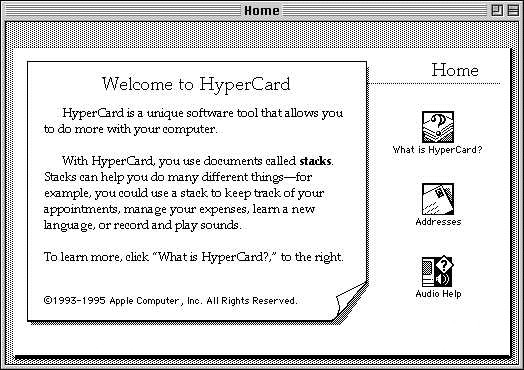
HyperCard was created by Bill Atkinson for Apple in 1987, originally was built as a graphic programming environment. It became the first successful hypermedia systems that was created before the World Wide Web.
HyperCard is based on the concept of a "stack" of virtual "cards". Cards hold data, just as they would in a rolodex. The layout engine was similar in concept to a "form" as used in most Rapid Application Development (RAD) environments (such as Borland Delphi or Visual Basic). A special "Home" stack (precursor to the home page on a website) was available as an application launcher, a repository for shared scripts, and a facility for setting preferences.
HyperCard is not only a database system. The layout of each card could be unique, just as one can write additional non-standard information on a Rolodex card. A special background layer contained elements that appeared on all cards of that stack or on all cards grouped under a certain background. Backgrounds could include pictures (its original purpose, "background picture"), in addition to the objects also available for each card: fields; buttons; (static) text; (editable) text fields; and other common GUI elements. Each card then could contain different data in the text or picture fields, as in a database.
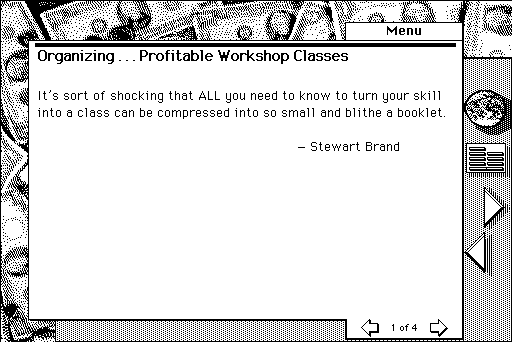
View of an Electronic Whole Earth Catalog article
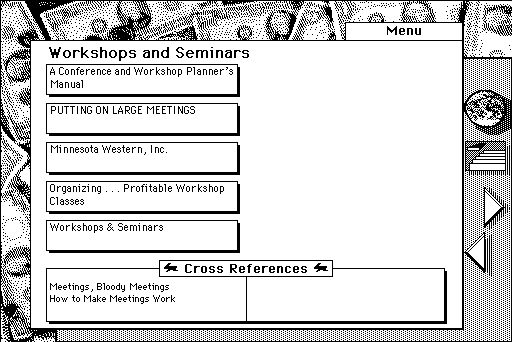
View of Electronic Whole Earth Catalogue cluster

View of a Electronic Whole Earth Catalog section
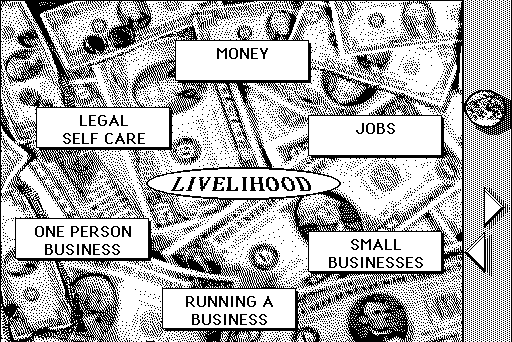
View of an Electronic Whole Earth Catalog domain

Electronic Whole Earth Catalogue full text search
2 notes
·
View notes
Text
Learn The Truth About Hypercard In The Next 19 Seconds | hypercard
HyperCard | MicroStrategy – hypercard | hypercard
HyperCard – Le Blog de l'Aventure Apple – hypercard | hypercard
Hypercard 3G Digital Dual sim Adapter 3G und 4G – hypercard | hypercard
Re: Preference for Keeping Saved Empty Button Scripts Empty – hypercard | hypercard
Car, Concept, Vehicle, Auto, Speed – hypercard | hypercard
Twin Peaks Bedside Companion HyperCard Stack Macintosh – hypercard | hypercard
Loper OS » Why Hypercard Had to Die – hypercard | hypercard
HyperCard On The Archive (Celebrating 19 Years of HyperCard … – hypercard | hypercard
El blog de Dbargel: Storia del software: Apple Hypercard … – hypercard | hypercard
Hypercard 3G Digital Dual sim Adapter 3G und 4G – hypercard | hypercard
HyperCard reflections #hypercard19th – Learnlets – hypercard | hypercard
Car, Concept, Vehicle, Auto, Speed – hypercard | hypercard
19: HyperCard help screen describing how to add a button to a user … – hypercard | hypercard
Hypercard on an HP TC1100 | vaporstack – hypercard | hypercard
Hypercard to NeXT – hypercard | hypercard
Loper OS » Why Hypercard Had to Die – hypercard | hypercard
19 years of HyperCard—the missing link to the Web | Ars Technica – hypercard | hypercard
HyperCard 10mg – hypercard | hypercard
Running a Hypercard stack on a modern Mac | James Friend – hypercard | hypercard
from WordPress https://flyinghamster2.com/learn-the-truth-about-hypercard-in-the-next-19-seconds-hypercard/
0 notes
Text
This is why I once wanted to make a Homestuck fan adventure called “Hypestack” as a tribute to Hypercard and how it inspired the belief that hypermedia was the future of creativity.
The worst thing about Homestuck being the masterwork of our generation is it retrospectively makes all those 1993-ass "Multimedia Studies" professors teaching courses on HyperStudio kinda onto something
163 notes
·
View notes
Text
All Hyped Up for Hypercard: Further Adventures with an Apple Legacy Format
https://blogs.loc.gov/thesignal/2021/07/all-hyped-up-for-hypercard-further-adventures-with-an-apple-legacy-format/ Comments
0 notes
Text
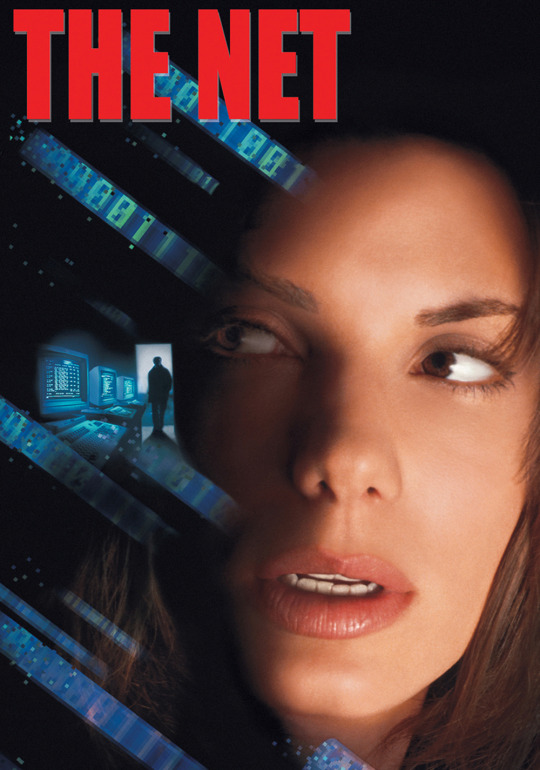
The Net
Sandy B. is much too good for this. Even by 1995, she was too good for this—in fact, The Net was released as the great masterpiece While You Were Sleeping.
I'll go a step further: This movie was not good enough for wide release. This is some Lifetime trash. Don't get me wrong; I loves me some basic cable original motion pictures, but I remember seeing commercials for The Net on TV. This was propped up as a major blockbuster, and it's not that.
What it does have going for it is inexplicable, wasted star power and an accidentally prescient story about the danger of online data manipulation. It's not really about that, though. It's just a typical Cassandra story, about a poor woman who was wronged by an evil, charming man, but no one believes her, and now she has to clear her name before it's too late!
It's totally by the numbers, but I'll admit that the mid-'90s computer stuff did a lot for me (wow, there's a HyperCard box on the shelf in that cubicle!), and Dennis Miller's whole character is just so weird, babe.
It's drab, rote, and unengaging, but...I didn't give in to the urge to turn it off? Take that for what you will.
- - -
I’m ranking every movie I watch between my 33rd and 34th birthdays right here on Tumblr dot com because I am some kind of idiot person, I guess.
Spider-Man
Moonrise Kingdom
Fatty Drives the Bus
Romy and Michele’s High School Reunion
Thelma & Louise
50 First Dates
Congo
Terminator 2: Judgment Day
Alien
Gulliver’s Travels
I Feel Pretty
TMNT
The Darjeeling Limited
The Farewell
The Orange Years: The Nickelodeon Story
Legally Blonde
Stargate
The Mitchells vs. the Machines
The Net
All of Me
Mars Attacks!
The Adventures of Pluto Nash
Our Idiot Brother
Green Lantern
Brewster’s Millions
Pork Pie
Incredibles 2
Confessions of a Shopaholic
Election
My Fair Lady
Thunder Force
0 notes